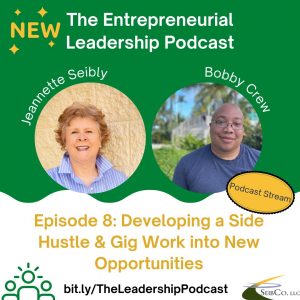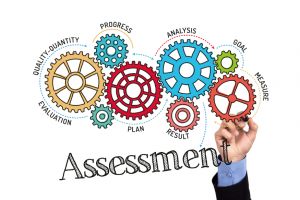
Did you know hidden talent can be easily spotted using a well-designed job-fit selection system?
While everyone is complaining about the difficulty in finding “hidden talent,” the reality is that the person could be right in front of you! However, your biases often get in the way of seeing their hidden talents. Other blocks that can get in the way include lack of objective data, unrealistic expectations … the list goes on and on.
Bottom line: We miss spotting hidden talent due to a lack of good, reliable, and objective data when making our hiring, promoting, and job transferring decisions.
Here Are Ways to Avoid These Common Pitfalls
Prepare Job Applicants. Send them a helpful video about your interview process and what to expect. Remember, for many, this is their first time talking with your company. Provide several interview questions (and be sure to ask at least one or two of these questions) so they feel comfortable with your selection process. I would also recommend sending them a link to the brag book: “How to Sell Yourself Anytime, Anywhere: Start Bragging!” Many applicants have hidden talents that they need to learn how to share effectively!
Use Valid a Honesty/Integrity Assessment. These direct admission tools can help weed out those job candidates that are good at selling themselves, but have things to hide. They also help provide safer workplace environments. Be sure to check with local and state statutes to avoid asking inappropriate questions (e.g., age, marital status, children, etc.).
Conduct Phone Screen Interviews to Gather Objective Data. Ask questions designed to reveal the facts of their past employment and education. Remember, verifying and documenting is essential. Too often, job candidates fail to get honest about job fit… they want the job. (For help in creating questions, READ Chapter 10, Hire Amazing Employees)
How many times have you hired someone and 2 hours or 2 weeks or 2 months later realized who you interviewed was not the person who has showed up for the job!
Use a Qualified Job-Fit Assessment. It’s crucial to see the “whole person” (e.g., thinking style, core behaviors, and occupational interests). Using the wrong assessment allows applicants to show themselves as they want to be seen, not as who they are. With over 3,000 published assessments available, selecting ones not designed or complying with the Department of Labor for pre-employment and selection use is easy. How do you know the difference? Ask for a technical manual and check for distortion, predictive validity, reliability, and validity coefficients. (See Chapter 9, Use the Right Assessments and Skill Tests, Hire Amazing Employees). Using the correct assessment, the right way makes all the difference in the selection process!
Interview for Job Fit. Too often our beliefs in the skills required are sabotaged by our subjective biases (e.g., since they are good in math, they will be good accountants or financial consultants; since they were friendly during the interview, they’ll be great bosses; etc.). Ask job-related questions and listen! Deep dive into their responses using the “Rule of 3” to determine the depth of their skills. (For additional insights about “Rule of 3” and creating job-related questions, READ Chapter 10, Hire Amazing Employees)
Conduct Due Diligence. It’s not uncommon for applicants to provide education, job titles, and companies that don’t exist! Make sure to conduct background, licensing, education, and other checks. Many times, using a third-party provider ensures a thorough and consistent process. (SEE Chapter 17, Types of Checks, Hire Amazing Employees)
Require Onboarding for Best Results. Start when the job offer is accepted and will continue over a period of months. Otherwise, your newest talent will “leave” while remaining on the payroll. (READ: Chapter 20, The Success of a New Hire Is Up to You! Hire Amazing Employees)
©Jeannette Seibly 2024 All Rights Reserved
 Jeannette Seibly is a Talent Advisor/Leadership Results Coach with over 31 years of experience guiding leaders and bosses to improve their hiring, coaching, and managing practices and produce amazing results! And yes, it always starts with having the right people in the right jobs! She has been an Authorized PXT Select Partner for over 31 years. Contact Jeannette to learn more about this state-of-the-art job-fit assessment tool or how to coach and manage your people to achieve amazing results.
Jeannette Seibly is a Talent Advisor/Leadership Results Coach with over 31 years of experience guiding leaders and bosses to improve their hiring, coaching, and managing practices and produce amazing results! And yes, it always starts with having the right people in the right jobs! She has been an Authorized PXT Select Partner for over 31 years. Contact Jeannette to learn more about this state-of-the-art job-fit assessment tool or how to coach and manage your people to achieve amazing results.
A note from Jeannette about discovering hidden talent: Often, we miss spotting hidden talent due to the lack of good, reliable, and objective data when making our hiring, promoting, and job-transferring decisions. With a well-designed job-fit selection system, let’s make 2024 a great year. Need help? Have questions? Contact me now!
 It’s time to get honest and real! Are there days you dread managing people, projects, and your team’s financial performance? You’re not alone! Everyone has their blind spots! NOW is the time to get the guidance you need to make the right changes for 2024. I have extensive experience and wisdom guiding bosses and leaders to hire, coach, and manage their teams successfully. The bonus … they achieve unprecedented results. Contact me to learn more about my in-depth, one-on-one, customized coaching programs.
It’s time to get honest and real! Are there days you dread managing people, projects, and your team’s financial performance? You’re not alone! Everyone has their blind spots! NOW is the time to get the guidance you need to make the right changes for 2024. I have extensive experience and wisdom guiding bosses and leaders to hire, coach, and manage their teams successfully. The bonus … they achieve unprecedented results. Contact me to learn more about my in-depth, one-on-one, customized coaching programs.


 Jeannette Seibly is a champion for success. As a leader, do you have bosses that are difficult for teams to work with? Jeannette’s depth of experience and wisdom can transform those bosses from hated to respected!
Jeannette Seibly is a champion for success. As a leader, do you have bosses that are difficult for teams to work with? Jeannette’s depth of experience and wisdom can transform those bosses from hated to respected!  Are you ready to build your confidence and success as a boss? The coach is in! Every boss and leader has their blind spots! They get in the way of being a results-producer! When tough times occur, and they will, asking for the right help is essential! I have extensive experience and wisdom guiding bosses to hire, coach, and manage their teams. Along the way, they achieve unprecedented results.
Are you ready to build your confidence and success as a boss? The coach is in! Every boss and leader has their blind spots! They get in the way of being a results-producer! When tough times occur, and they will, asking for the right help is essential! I have extensive experience and wisdom guiding bosses to hire, coach, and manage their teams. Along the way, they achieve unprecedented results. 
 Jeannette Seibly is The Leadership Results Coach. She has over 30 years of award-winning international experience as an executive consultant, speaker, and business author. Her clients surpass the norm by working through sticky situations and challenging relationships to become positive influencers. Contact Jeannette for a confidential discussion.
Jeannette Seibly is The Leadership Results Coach. She has over 30 years of award-winning international experience as an executive consultant, speaker, and business author. Her clients surpass the norm by working through sticky situations and challenging relationships to become positive influencers. Contact Jeannette for a confidential discussion.  This week’s PODCAST: Listen to Grow your side hustle into a full-time job with my guest, Bobby Crew on
This week’s PODCAST: Listen to Grow your side hustle into a full-time job with my guest, Bobby Crew on 
 Jeannette Seibly is The Leadership Results Coach. She’s celebrating 30 years as an award-winning international executive consultant, speaker, and coach. Her clients value the listening and positive difference she brings to any conversation. Feel stuck in a sticky situation or a challenging relationship? Want straightforward counsel to blast through it?
Jeannette Seibly is The Leadership Results Coach. She’s celebrating 30 years as an award-winning international executive consultant, speaker, and coach. Her clients value the listening and positive difference she brings to any conversation. Feel stuck in a sticky situation or a challenging relationship? Want straightforward counsel to blast through it? 

 Why do new hires leave so soon? There can be many reasons. But it’s often due to NO (or the poorly designed) new employee orientation and onboarding program! Be part of the 12% that onboards effectively! Want ideas to help you get started? Get your copy of the newly released,
Why do new hires leave so soon? There can be many reasons. But it’s often due to NO (or the poorly designed) new employee orientation and onboarding program! Be part of the 12% that onboards effectively! Want ideas to help you get started? Get your copy of the newly released, 

